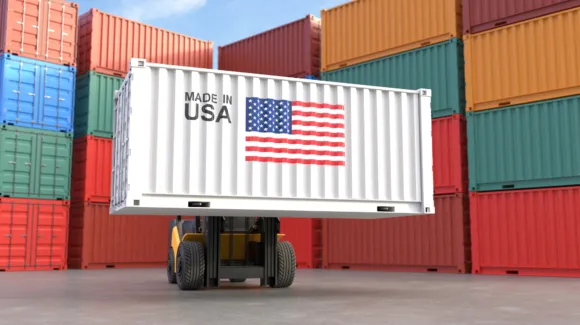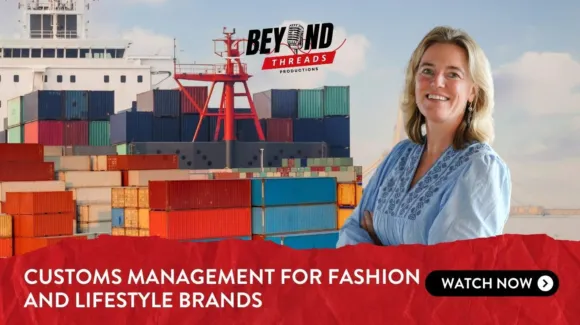The end of the de minimis duty exemption for goods imported into the US regardless of their origin (in addition to previously only China and Hong Kong) is severely impacting fashion brands. In practice, also all imported parcels valued at less than $800 are now subject to import tariffs and much more rigorous customs checks. This has left fashion brands across the board grappling with the impact on their US-bound e-commerce and B2B orders.
In the worst-case scenario, shipments could even be seized by the authorities at the border and returned to the sender when documents aren’t correct and complete or when for example duties aren’t paid because of ignorance Alternatively, shoppers could find that their packages are being ‘held hostage’ until they themselves pay a fee they weren’t expecting and which will not boost their satisfaction ratings. Neither is a good look for your brand. A proven successful way to prevent these situations and counter customs complexity is to send orders to customers under the incoterm: Delivered Duty Paid (DDP).
Read on to learn how shipping DDP can ensure business as usual for your US customers by eliminating unwelcome surprise fees and delayed or even disappearing orders.
What are Incoterms?
Incoterms are a list of 11 internationally recognised trade rules published by the International Chamber of Commerce (ICC). They define and allocate the responsibilities of sellers and buyers who are engaging in cross-border, international trade. This includes determining which party – the buyer or the seller – carries the responsibilities, costs and risks during a transaction. DDP is one of these Incoterms. Under this agreement, the seller bears the greatest responsibility (e.g. regarding transport, customs and finance).
DDP: An all-in-one agreement often used to streamline the post-de minimis trade
The last thing your US customers want is getting involved in the bureaucratic processes leading up to them receiving their order – or, worse still, a notification that their order won’t be delivered at all. There have been plenty of horror stories like this over the past few months, therefore you need to make very sure to avoid dissatisfied customers and negative reviews.
Under a DDP agreement, the seller (i.e. the brand that’s shipping goods to the US) takes on the responsibility for paying all relevant duties, taxes and customs clearance fees required to import the goods into the country. The total cost of transporting the product to its final destination, including all necessary fees, is known as the ‘full landed cost’.
The amount to be paid depends on the type of product, its country of origin and usually the materials it consists of. (more on this in a future article). Automated tools to help correctly determine these which will lead to the correct HS or Harmonized System code for your order , ensuring that the declaration will be correct and the correct fees are applied and paid by you, the seller.
Putting it into practice: A frictionless customer experience for US shoppers
The ideal situation is to keep the purchase experience as simple, fast and reliable as it was before the end of the de minimis exemption – when there were no fees to pay and limited customs checks on sub-threshold packages. Of course, there are now added fees that need to be paid, but the customer doesn’t need and likely doesn’t want to know about them at all.
Indeed, many carriers – including national postal services – have now started providing “duties paid” fulfilment options to help brands with the switch to DDP. For example, Royal Mail recently introduced its Postal Delivery Duties Paid (PDDP) service, which lets senders pay duties in advance along with a handling fee to manage customs clearance.
But what if you operate on a larger scale? Say, if you’re shipping hundreds or thousands of orders to the US per month? That’s where a fashion logistics provider can help.
How can a fashion logistics provider support customs compliance?
Brands working with a fashion logistics provider can benefit from simplified customs compliance. Firstly, they can help you to calculate the correct duties that need to be paid per product, drawing on their normally ample experience in the matter. This assures the removal of any ambiguity, or exposure towards US customs.
Next, the fashion logistics provider can support also the actual payment process They can leverage their extensive network of international carriers and strong relationships. These partner carriers will simply pay the correct fee to the US customs authorities and invoice the logistics provider at a later date as part of the normal cycle.
This means that, apart from a disclaimer on your e-commerce site (e.g. ‘Price includes all taxes and fees’), there is no change to the customer experience what so ever. Of course, your brand will still always have to pay the additional fees, but you will be able to give your customer the same experience as previous – with no surprise fees or extra hassle.
DDP or not DDP: Choosing the right customs strategy for your brand
Partnering with an experienced third-party logistics (3PL) partner can and should greatly simplify the transition to DDP for brands in the EU, UK and elsewhere shipping to the US. They provide all the relevant experience in customs compliance, tariff classification and duty calculation to remove the administrative legwork and help you get back to what you do best: growing your brand by delighting your customers wherever they are in the world.
Of course, there are many possible routes to ensure streamlined customs compliance, including bonded warehousing, intercompany shipping or moving some of your inventory to the US when volumes are permitting or customers demanding. A dedicated fashion logistics provider will be able to advise you on which approach will work best for your brand, your products and your volumes, both now and in your brands future. With a well-adapted, agile and scalable approach, you’ll be able to keep delivering an excellent customer experience, without fail.
International trade keeps getting more complex. Check back soon for more updates on how to deal with the de minimis situation. And, if you want support to adapt your US supply chain strategy, contact us today for a free consultation with a Bleckmann expert.












